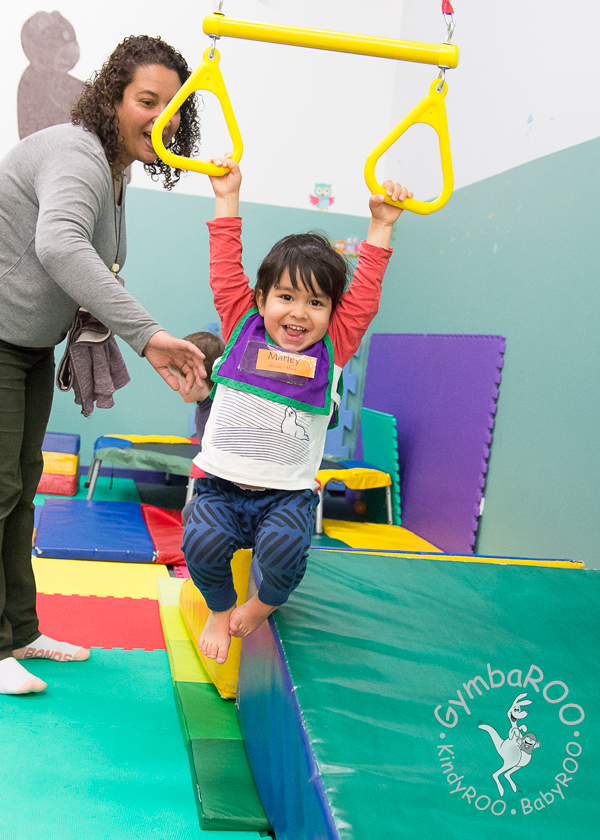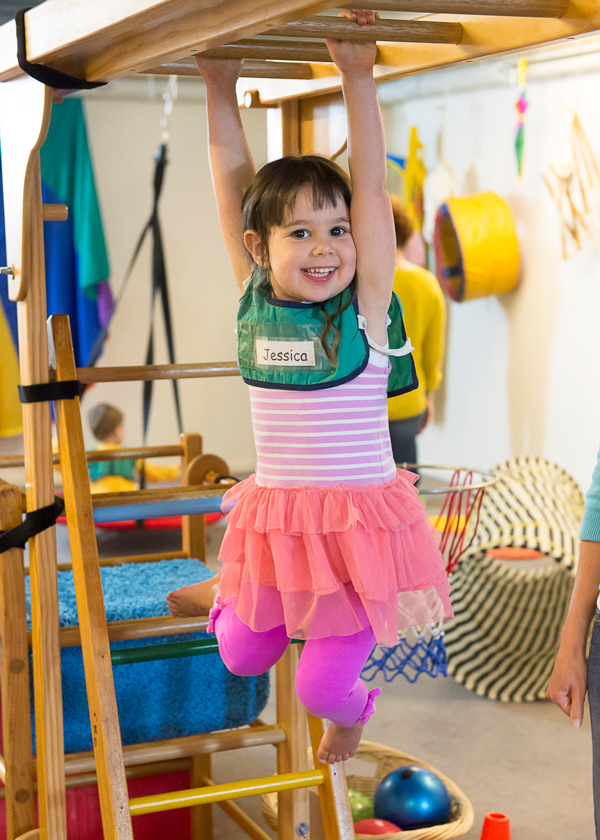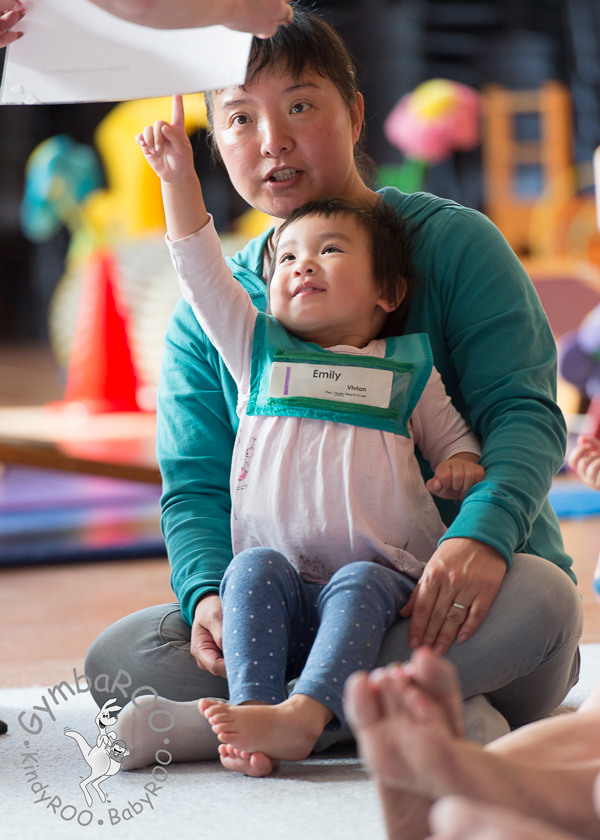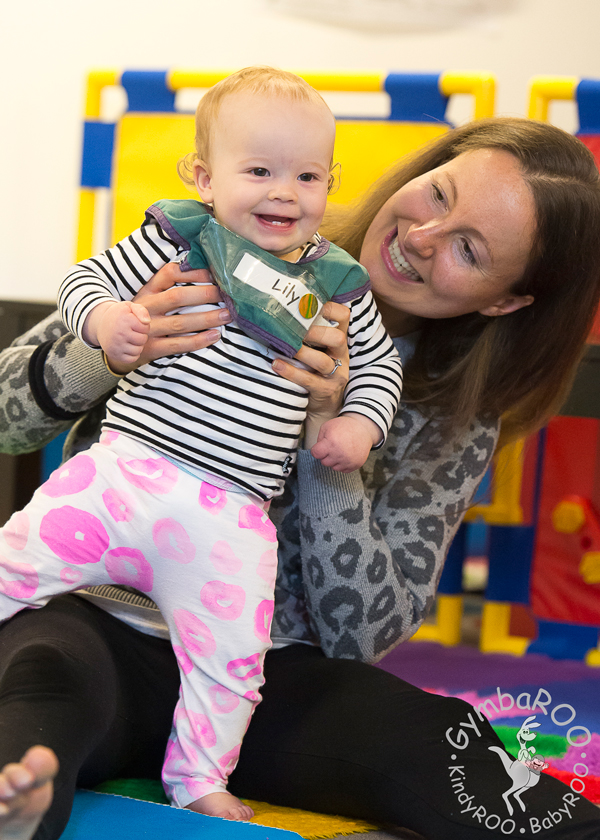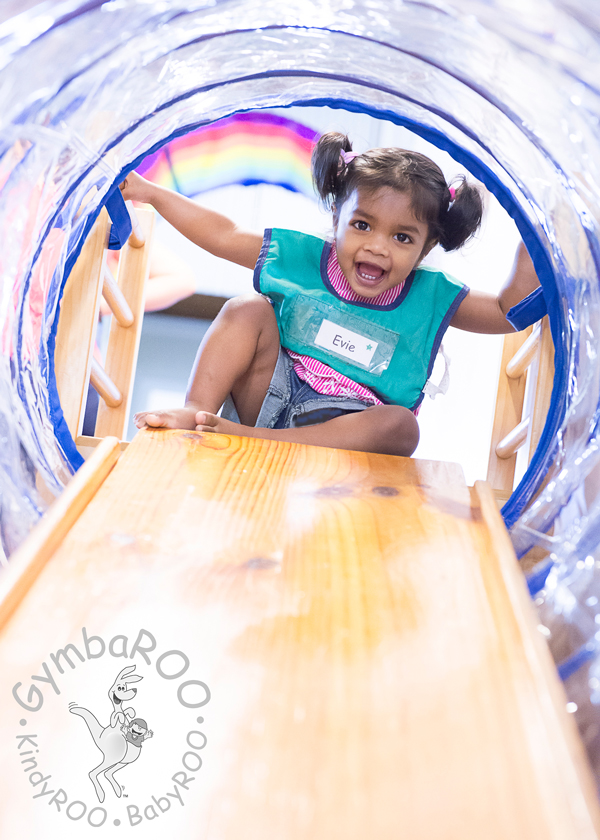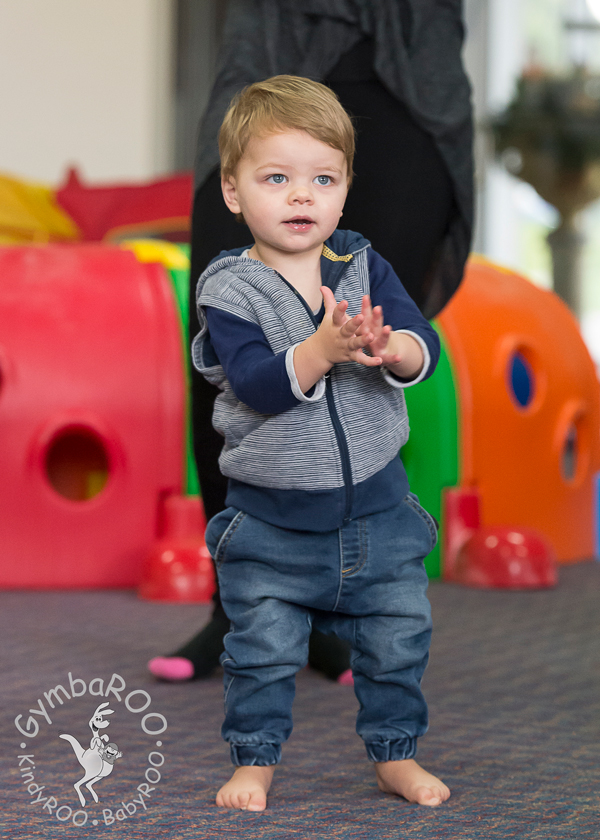Click here to join thousands of parents already raising smarter babies with our FREE online BabyROO video series: Active Babies Smart Kids. GymbaROO / KindyROO kids are excelling academically, in leadership roles and on the sporting field.
Find us at: GymbaROO and KindyROO
Dr Jane Williams and Bindy Cummings
The GymbaROO-KindyROO program is designed to ensure that babies and children go through the normal developmental sequence of movements and are given plenty of opportunity to practice, repeat and refine these movements within each stage of development. It is only through repeated movement experiences that the young brain grows and connects efficient and effective message pathways that optimise brain development and provide the foundations for more complex levels of learning such as reading, writing and mathematics.
Writing
The human body is genetically programmed to develop from the centre of the body – big muscles – to the outer parts of the body, dominated by the small muscles. Proficiency at any fine motor (small muscle) task, depends firstly on the development of the associated bigger muscles, (gross motor). Handwriting is one such fine motor skill. Learning to write actually begins in infancy. If the big muscles do not receive adequate stimulation and development, then there is a flow on effect to the small muscles in the hands and so writing, or any task requiring manual dexterity, can be affected.
Through tummy time, commando crawling and creeping our babies begin their journey towards being proficient hand-writers as they gain control over primitive reflexes, develop muscle tone and strength in the hands, arms, shoulders, neck and back – vital for later fine motor skill development.
As they grow, young children continue to develop their upper body strength as they push, pull, lift, carry, climb, hang and swing – working on both the gross motor component of handwriting and fine tuning manual dexterity skills. Holding, hanging and swinging correctly helps with the development of cortical grip which will help to ensure that the correct mature pencil grip will develop over time. This is one of the reasons you will find so many hanging and swinging opportunities throughout our GymbaROO-KindyROO classes.
Becoming competent on the GymbaROO-KindyROO overhead ladder (monkey bars) not only works on gross motor abilities and strengthening but also developing hand-eye coordination (the eyes will follow the hands when moving from rung to rung), motor planning (moving and thinking), timing, rhythm, posture, balance and laterality development.
While muscle development and upper body strengthening are vital components necessary for proficient handwriting, there are other areas of skill development that are also needed by our young hand-writers.
To be ready to write easily children need to have the following:
- Good tactile and body awareness so they can control their fingers automatically.
- Posture and balance developed to the extent that they can sit still easily and concentrate on their work.
- Auditory perception and processing skills so they understand the instructions given by their teacher.
- The ability to move their eyes smoothly from what they are copying to what they are writing.
- The ability to ‘picture’ the letters they are writing in their mind (visualisation).
- The fine motor skills to manipulate the paper and pencil.
- The hand-eye coordination to write correctly what their eyes have seen.
- Temporal awareness; an internal understanding of time, to be able to do the allotted task in the time allocated.
When all of this is in place, our children can easily take on the task of writing. However, if one or more of these factors are not fully developed, then a child may potentially struggle with the writing tasks at school.
Reading
The first steps towards reading begin long before a child enters school.
When children have the opportunity to encourage motor skill development they also stimulate the muscles of their eyes and their vision. As they move from one place to the next, their eyes learn to adjust – near and far, up and down, from left to right and back again. The brain is also learning to interpret what is being seen. These are essential skills for learning to read – eyes need to move smoothly and in unison across a page to read, and the brain needs to be able to interpret what is being read. This ability to ‘visualise’ (see in our minds eye) and perceive (understand what we are seeing) are key ingredients to learning. Children with limited movement opportunities often find these tasks much harder.
Musical songs, games and nursery rhymes like those used at GymbaROO-KindyROO promote and boost language development, helping to lay the foundation for communication and learning to read and spell. Neuroscientists have found that hearing, repeating, and moving rhythmically to music, teaches the brain how to communicate. It connects the necessary neural pathways the children need in order to begin to speak and is encouraging for verbal communication. Good readers have good language and speech skills.
Maths
Babies and young children develop mathematical skills based on bodily and sensory-motor experiences that apply to mathematical concepts such as shape, space and order e.g. How do I fit? How many of those shapes can I crawl through? What part of my body should I use first in order to move through that tunnel? All experiences they get plenty of practice at during GymbaROO-KindyROO classes! A recently published study1 has found that toddlers under the age of four years who acquire an extensive range of motor skills also demonstrate high levels of mathematical skills.
When toddlers actively play they are stimulating the development of number skills such as manipulation, playing with objects that require classification, one-to-one correspondence, counting and sorting.
Mathematics is also based in an understanding of rhythm and time and having a well-developed sense of temporal awareness. Rhythm is essentially a basic form of mathematics. A young child learns patterns associated with rhythm. These rhythmical patterns then assist the child with later mathematical pattern recognition. The combination of music and movement also enhances skills of logic and rhythmic skills2 that are important for organising ideas and solving problems – the same skills needed to develop an understanding of mathematics. At GymbaROO you will have noticed just how many activities we do that involve the use of a regular beat; finger and foot plays, exercises to music, dances, music time on the mat with rhythm sticks, maracas, triangles and even parachute time.
At GymbaROO-KindyROO, every activity right from the baby classes through to the School Readiness classes is carefully planned to ensure children develop solid foundational building blocks for learning and the best skills in place to start school.
Read also: Why GymbaROO-KindyROO kids excel academically (Part 1)
Dr Jane Williams (PhD, BMgt, RN(Paeds)) is the Research and Education General Manager for GymbaROO and KindyROO. She is one of Australia’s leading experts on baby and child development.
Bindy Cummings (B.Ed(Human Movement) Hons) has worked as a teacher, child development consultant, early childhood development lecturer, teacher trainer and INPP & iLS consultant. She is the co-creator of GymbaROO’s Active Babies Smart Kids online series, has authored many published articles on child development. She is working on the content and development GymbaROO’s portal and online training programs, and the creation of new online programs for parents and children. More on Bindy Cummings here.
GymbaROO Images by Studio Z Photography
References – see bottom of page.
GymbaROO-KindyROO
Thousands of parents, babies and children are presently involved in our programs and creating rising stars. GymbaROO-KindyROO kids are excelling academically, emotionally, in leadership roles and on the sporting field. Come join all the fun and learning! “GymbaROO – The best decision I ever made for my child.” Classes from 6 weeks old – 7 years GymbaROO KindyROO
Active Babies Smart Kids – Online Baby Classes
GymbaROO-KindyROO’s online series of baby classes is taking the parenting world by storm! It is highly recommended by doctors, paediatricians, early childhood experts and the Maternal Child and Family Health Nurses Association. This series is being called: “The essential guide for parents”. Join the thousands of parents already playing with their babies from birth, in the best way for brain and body development and laying crucial foundations for future learning. What happens in the first year, not only matters, it matters a lot! See Introductory video below.
Click here: Active Babies Smart Kids online series of baby classes
Try the first episode FREE: Tummy time + baby fun and development class 1
Enjoy the following GymbaROO-KindyROO articles
GymbaROO-KindyROO: Who, what, where, why and how
All about GymbaROO-KindyROO’s online baby classes for parents and babies: Active Babies Smart Kids
How to raise a smarter, happier baby
Why active babies make smart kids
Become a GymbaROO-KindyROO franchisee
Kids learning ability jumps 2 years with 25 minute GymbaROO movement program 3x a week.
NAPLAN results improve with LESS reading and maths and MORE GymbaROO.
To my elected childcare, preschool or school: Please include a GymbaROO sensorimotor program.
Is my child’s brain the same age as he is? Neurological age versus Chronological age.
School Readiness: Is my child ready for school? A checklist
Click here for more GymbaROO-KindyROO article choices
References for article:
-
Reikerås, E., Moser, T. & Tønnessen, F.E. (2015). Mathematical skills and motor life skills in toddlers: do differences in mathematical skills reflect differences in motor skills? European Early Childhood Education Research Journal, DOI: 10.1080/1350293X.2015.1062664
-
Coulter, D. J. (1995, Winter). Music and the making of the mind. Early Childhood Connections: The Journal of Music and Movement-Based Learning.



